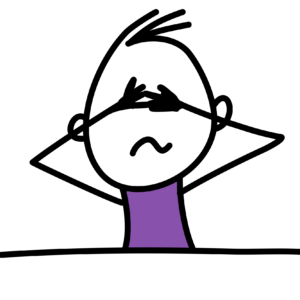Denial (as part of the Responsibility Process)
Beginner’s Thoughts about the Responsibility Process: Denial
I just started the Responsibility Process Immersion program. Well, I didn’t totally start with the Responsibility Process, as I got introduced to it at the Scrum Gathering in 2016 when attending Christopher Avery’s talk and -in the aftermath- reading the corresponding book. This summer I decided to go for a “proper training” on it and now go along in the immersion program.
I had some thoughts and would like to share, get additional ideas, comments and feedback.

Denial
Surprisingly, I started my pondering journey about the process with the denial state of mind in which we are denying the existence of something, let’s say a problem.
I think this state is to be separated into different phases that transform smoothly into each other:
- There is no problem.
- Complex constellation: there are some hints, their relationship and leading to a problem is not predictable, though -in retrospect- could be analyzed and seen. Yet, we don’t know about the problem.
- Complicated constellation: if analyzed well and properly, hints could be combined to indicators for a problem to be existent.
- Clear constellation: indicators for a problematic situation are very clear. Not acknowledging them would be ignoring them.
- No more denial: We acknowledge the problem and are no longer in denial state of mind.
It strikes me that I recognize the different areas of the Cynefin framework here: the more problematic indicators are present and the clearer the structure and connection becomes the more we move forward from complex to complicated to clear constellation, and finally to topic acknowledgment. The velocity people would take for this journey depends on the information they have at hand, their interpretation, their personal involvement and interest, their abilities to handle complex structures, their experience, their personality. Probably more factors apply.
What I am missing in the 5 phases above is the chaotic domain of the Cynefin framework. I would be too eager to map it to the state of “no problem”, so that the 2 models correlate nicely. Sure enough out there in this world many things happen that will some day be parts of preconditions for a problem to arise somewhere. Why do I find myself being hesitant to do map those 2 stages? I do not want to accept that everything out there, harmless as it might seem now, might be forming to become problem someday. My kind of denial here. This model is recursive.
The central domain of disorder in the Cynefin framework I connect to the fact that different people see and experience the same situation in different phases at the same time and you can never be sure where you are: your yourself as well as the others.
